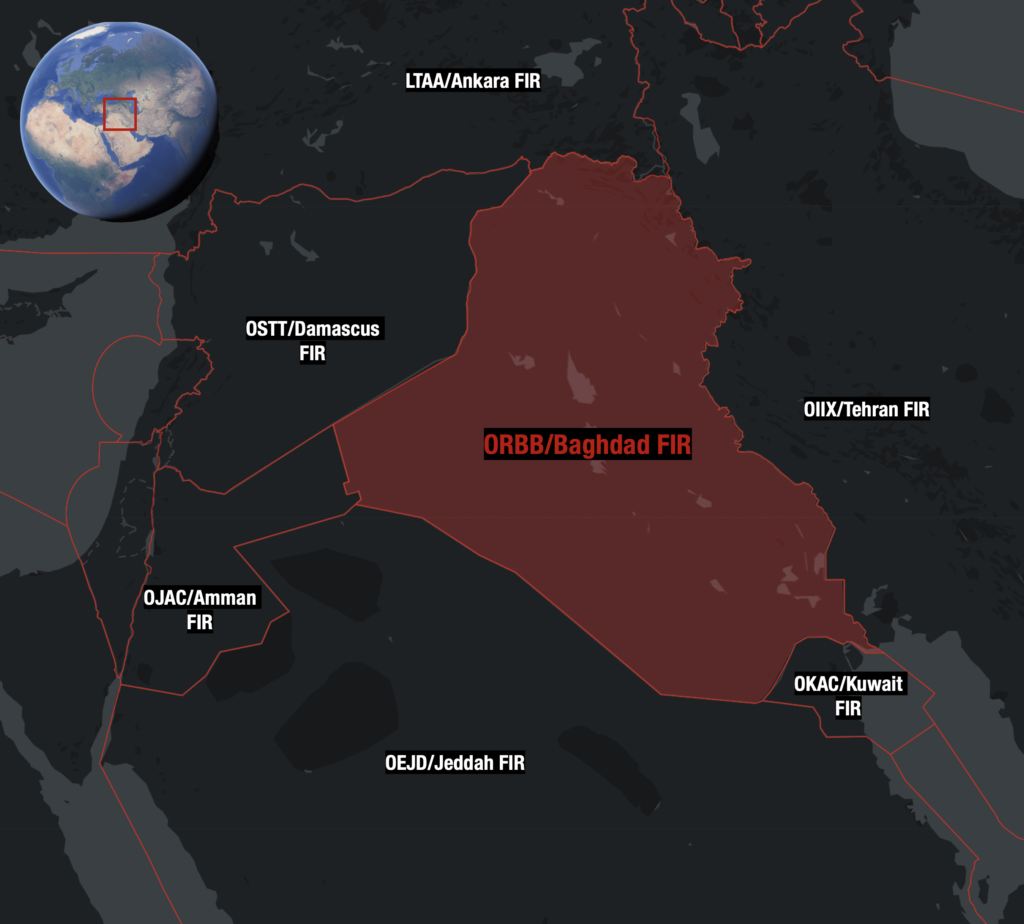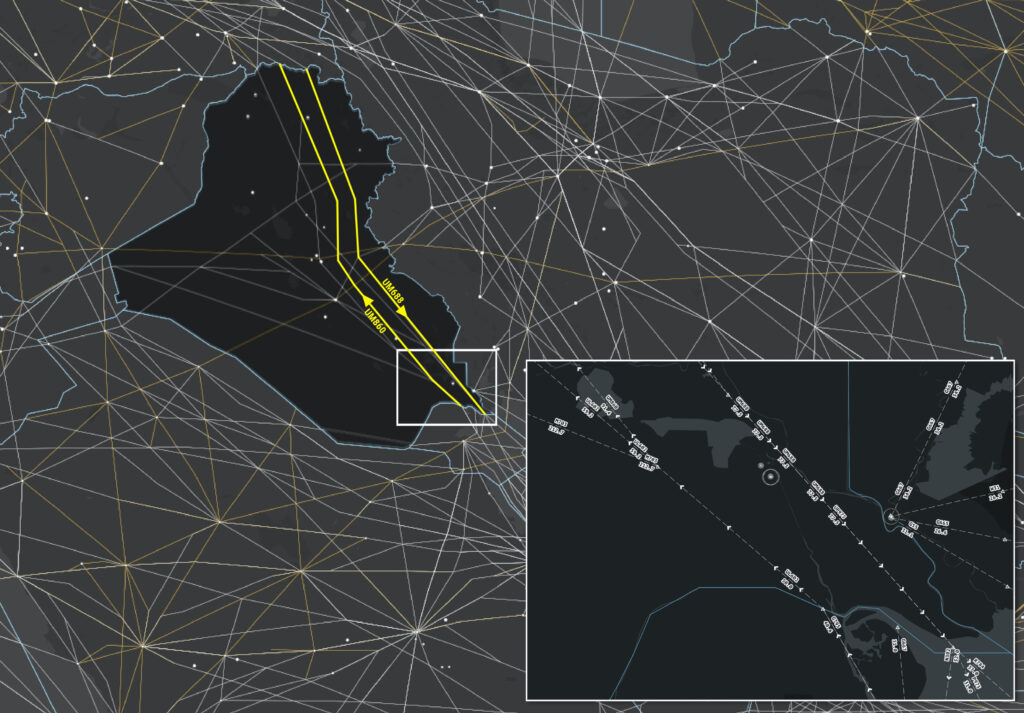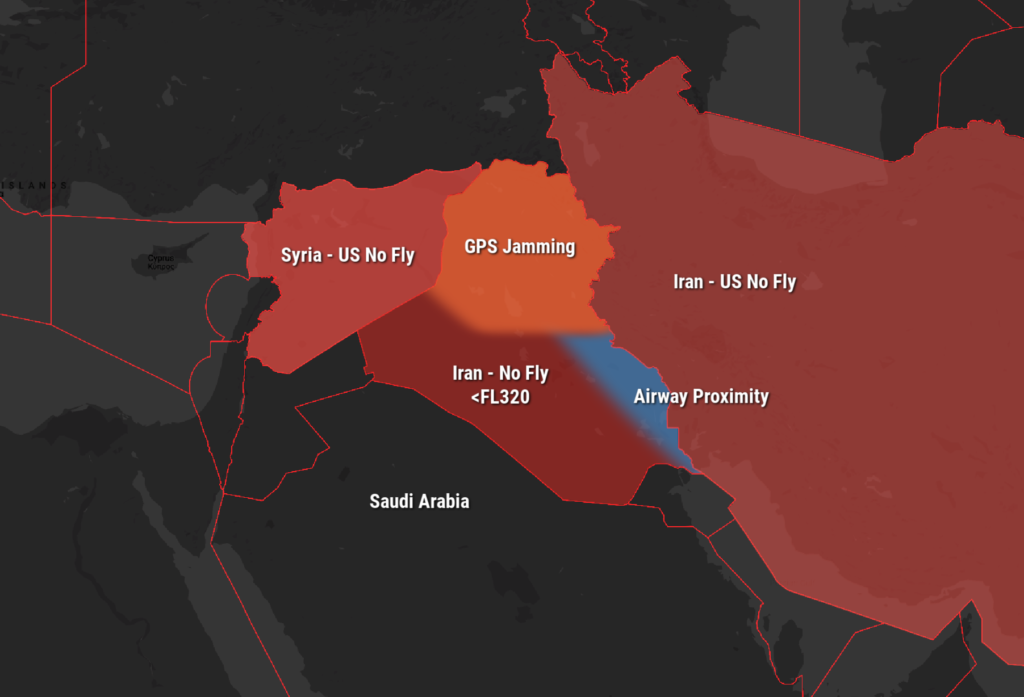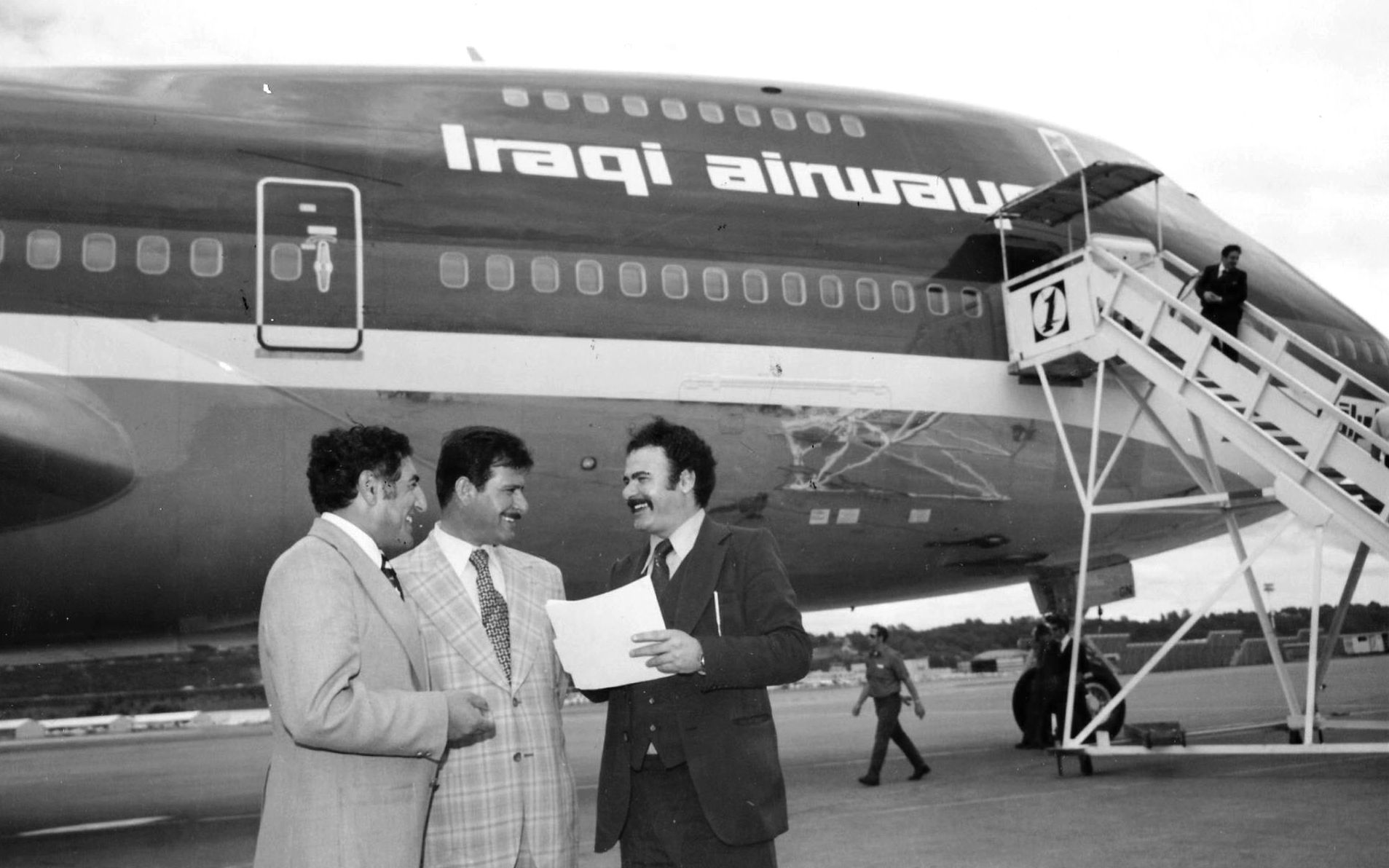The US FAA recently amended their long standing Notam prohibiting US Operators from entering the ORBB/Baghdad FIR. The KICZ Notam A0036/21 used to bar flights at all levels, but now US operators are allowed to overfly Iraq provided they remain at or above FL320, as per the SFAR.
So, what can you expect if you elect to use this newly available routing, and what risks remain?
You can still expect risk
Iraq remains a political volatile country and the security there is unpredictable. Terrorist groups remains active, and have access to anti-aircraft weaponry.
What should you do?
- Continue to monitor alerts and sites such as Safeairspace to confirm what the current situation is.
- Flights should remain above FL320 to avoid risk from MANPADS.
- Do not use Iraqi airports as diversion options unless it is an absolutely critical emergency situation.

US Operators can now overfly the Baghdad FIR at or above FL320, but need to be aware of the risks.
All going well, here’s what expect
Plan to use the UL602, UM860 and UM688 airways. These are major airways utilised by traffic routing between Europe and the Middle East. Iraq offers the slightly shorter route compared to Iran (and Iran remains out of bounds for US operators).
The routings to plan are as follows:
Northbound:
– TASMI DCT SEPTU DCT ROXOP UM860 NINVA
– TASMI UL602 ALPET L718 DEBNI DCT EMIDO L718 KABAN (all flights need to be at or above FL280 before DEBNI to stay clear of restricted area OR/R 401).
Southbound:
– TASMI RATVO UM699 SIDAD (via airway)
– RATVO DCT SISIN UM688 SIDAD (DCT – subject to availability)
Kuwait are good at handing you over, and Bahrain and the UAE airspace is all well managed.
ATC standards are good, and standard VHF throughout, with radar. It is worth keeping your headsets on though because a good listening watch is required at all times in this region.
Routing south you might find yourself slowed down or shifted levels, or given early descents, as they manage the flow into some of the major hubs in the Middle East. If you fly into the Bahrain FIR (via RABAP or LONOS) be aware there are high levels of congestion here, particularly military traffic.

Parts of the southerly airways lie close to the Iranian border.
Any other considerations?
Iraq borders Syria which is an absolute no go area. There is a large prohibited area in the northwest quadrant of Iraqi airspace along the Syrian border. If you are looking to use LCLK/Larnaca as a diversion airport, consider how you will manage routing around Syria.
The main southerly airway lies extremely close to the Iranian border. The border is not a straight line so consider whether you might accidentally cross it if detouring for weather, or if offered a direct routing which cuts the corner.
You do occasionally get some major storms in this region. When they are there, they aim to be impressive!
GPS jamming is a problem, usually in the northern region from around 40nm north of the border and through about one third of the airspace. Of course, if you have INS and/or VOR/DME RNAV etc then you’ll be ok, but if you’re using something like Garmin avionics which rely solely on GPS then not so much. UAE airspace requires at least one GPS too, so update ATC if you need support!

Various ‘risk regions’.
What if I have to land there?
Security and safety on the ground is unknown and likely to be high risk.
The US have pulled their troops out and so there is little protection at the major airports. Leaving the airports will result in possible security issues and is unadvisable. While the airports are generally well maintained and serve some major international airlines, conditions are challenging particularly in the summer when temperatures regularly exceed 40°C. Terrain is also a consideration.
Cultural and religious regulations must be taken into account, and political conflict with certain nationalities should be considered. Alcohol and drugs are banned with severe penalties.
ORBI/Baghdad is a common target for rocket attacks, particularly because of its proximity to an air base. Rebels and terrorists are active in this area. The facilities and runways are decent with two ILS approaches and two runways of 4000m and 3301m. This should only be used in absolute emergencies.
ORMM/Basra is the second largest airport in Iraq and has a good length runway and an ILS. This should only be used in absolute emergencies.
ORER/Erbil offers a very decent length runway and facilities. The main area of issue is over the hills to the north of the airport. This is the only airport which may be recommended for use as a possible en-route diversion.
More on the topic:
- More: FAA warning issued, further serious navigation failures reported
- More: Flights misled over position, navigation failure follows
- More: Turkey, Syria and Iraq: Airspace Risk
- More: Iraq Airspace Risk For Overflights
- More: US FAA allows Iraqi overflights
More reading:
- Latest: Venezuela & Caribbean Airspace Update
- Latest: ReFuelEU: Europe’s new anti-tankering rules explained
- Latest: US CBP biometrics: BizAv rollout still unclear
- Safe Airspace: Risk Database
- Weekly Ops Bulletin: Subscribe
- Membership plans: Why join OPSGROUP?











 Get the famous weekly
Get the famous weekly 





